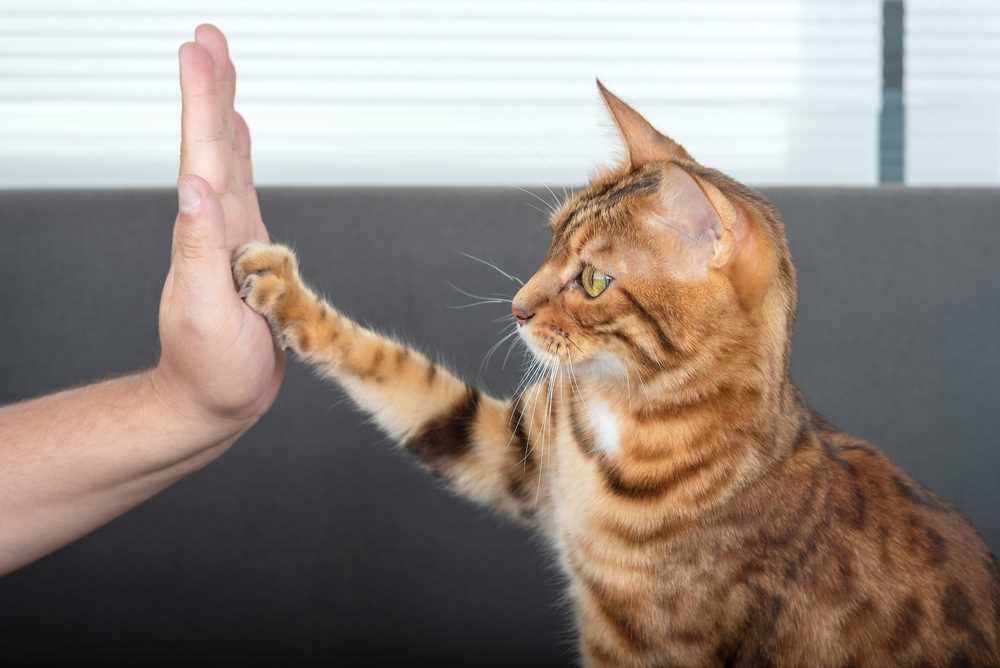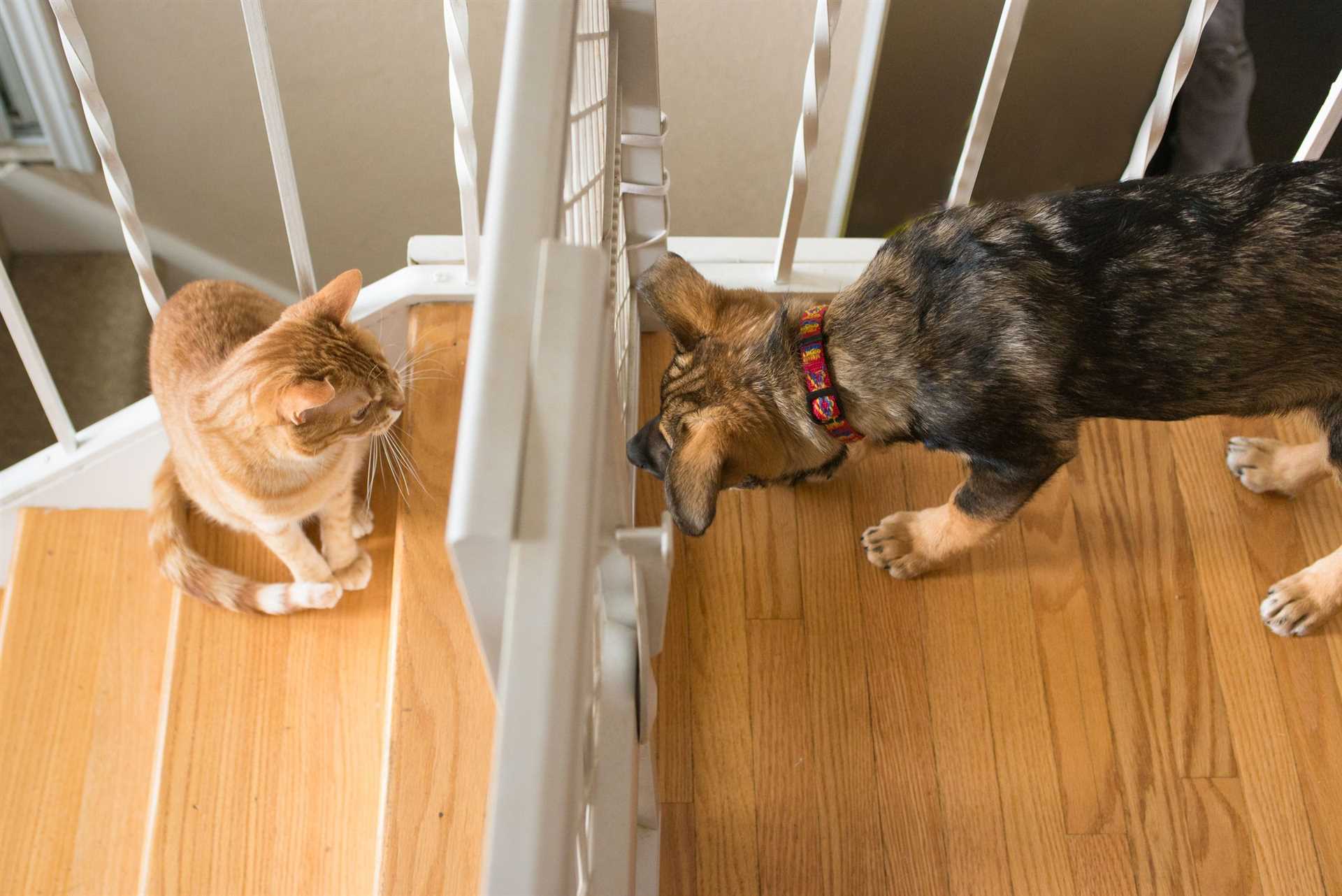As an 8-year-old Scottish Fold, I can affirm that with the right approach, my fellow felines can learn behaviors and tricks that many assume are exclusive to our canine companions. Utilizing positive reinforcement is a game-changer. Offering treats or affection as rewards significantly enhances the learning process, making it enjoyable for both of us.
Establishing a consistent routine is equally important. Cats thrive on predictability, so regular practice sessions at the same time each day can lead to quicker results. Patience is key; don’t expect instant success. Gradual progress is the name of the game. Short, engaging sessions work best–aim for 5 to 10 minutes at a time to keep interest high.
Incorporating play into training can also yield fantastic outcomes. Using toys to encourage specific actions not only provides exercise but also reinforces the bond between us. For instance, using a laser pointer to guide me to a designated spot can teach me to follow commands while having fun.
Lastly, understanding my unique personality is crucial. Some of us are more independent and may not respond to commands in the same way as others. Tailoring the approach to fit individual traits can make all the difference in achieving desired behaviors.
Training Techniques for Felines
Absolutely, teaching us is achievable with the right approach. Positive reinforcement stands out as a powerful method. Rewarding desired actions with treats or affection encourages repetition of those behaviors.
Start with basic commands such as “sit” or “high five.” Use enticing treats to guide movements. For example, hold a treat above my head to prompt a sit position. Once I comply, a tasty reward follows.
Short training sessions work best. My attention span is limited, so keeping sessions brief, around 5-10 minutes, ensures engagement. Frequent, consistent practice solidifies learning.
Utilize clicker training as an effective tool. The click sound marks the exact moment of desired behavior, making the connection clearer. Pair the click with a reward for maximum impact.
Patience is key. Each kitty learns at their own pace, so celebrate small victories. If I don’t grasp a command immediately, don’t lose hope. Adjust techniques or revisit previous lessons as needed.
Socialization also plays a role. Introducing me to new environments, people, and other animals can enhance adaptability and responsiveness to training efforts.
Lastly, keep it fun! Playful interactions stimulate my mind and make learning enjoyable. Incorporating toys or games during training can help maintain my interest.
Understanding Feline Behavior for Training

When engaging with my human, it’s essential to recognize my body language and vocalizations. I express my feelings through purring, tail movements, and ear positioning. For instance, a flicking tail may indicate annoyance, while a slowly waving tail often means I’m curious.
Positive reinforcement plays a crucial role in motivating me. Treats, praise, or playtime can encourage desired actions. Establish a routine; I thrive on predictability, and consistent cues help me understand what is expected.
| Behavior | Body Language | Response |
|---|---|---|
| Purring | Relaxed body, slow blinking | Happy and content |
| Hissing | Arched back, ears back | Feeling threatened |
| Slow Blinking | Soft eyes, relaxed posture | Trust and affection |
| Playfulness | Bouncing, tail up | Ready to engage |
Creating a suitable environment is key. Provide safe spaces for me to retreat when I feel overwhelmed. Interactive toys stimulate my mind and promote physical activity, making training sessions more enjoyable.
Observe my preferences. Some enjoy chasing toys, while others prefer gentle play. Tailoring activities to my interests increases engagement. Patience is vital; I may need time to grasp new concepts.
Consistency in commands is necessary. Use distinct words for different actions. This clarity helps me associate behaviors with specific cues. If I respond positively, reward me immediately to reinforce the behavior.
Incorporating short training sessions into our daily routine enhances bonding. Playtime can be an effective way to teach skills while strengthening our connection. Enjoy the process, and remember to celebrate small victories!
Basic Commands: Can Cats Learn Them?
Training to respond to certain cues is achievable. I’ve seen my fellow felines master some basic instructions, and it’s quite impressive. Here’s how to go about it:
- Sit: Use a treat to lure me into a sitting position. When I do, reward me immediately. Consistency is key; practice a few times daily.
- Come: Start in a quiet environment. Call my name with an inviting tone. Reward me when I approach. Gradually increase the distance.
- High Five: Hold a treat above my paw. When I reach for it, help me tap your hand. Reward me for every successful attempt.
- Stay: Use a firm but gentle tone. Ask me to sit, then take a few steps back. If I remain in place, give a treat. Repeat until I grasp the concept.
Patience is essential. The more enjoyable the experience, the more likely I’ll engage. Keep sessions short, about 5-10 minutes, to hold my attention.
Positive reinforcement works wonders. Use treats, praise, or playtime as rewards. Avoid punishment; it creates anxiety and hinders progress.
While I may not fetch a ball or roll over, I can learn simple tasks that enhance our bond. Tailor the approach to my personality, and soon I’ll be responding to cues with confidence.
Positive Reinforcement Techniques for Cats
Using treats as rewards is a fantastic way to motivate me and my fellow felines. Offering small pieces of my favorite snacks after I perform a desired action creates a positive association. Choose high-quality treats that are irresistible, ensuring they are small enough to keep my interest and not overfeed me.
Clicker training is another effective method. A clicker emits a distinct sound that signals I’ve done something right. Pair the click with a treat immediately to reinforce the behavior. With consistency, I’ll start to associate the click with positive outcomes.
Verbal praise works wonders too. Use a cheerful tone to express approval right after I exhibit the desired behavior. This helps me understand what you want from me without any confusion.
Creating a routine can also enhance learning. I thrive on structure, so practicing commands at the same time each day allows me to anticipate and engage better. Short, frequent sessions keep my attention focused and prevent boredom.
Incorporating playtime as a reward can be just as effective. Using a favorite toy after I follow a command reinforces the fun aspect of learning. It’s a win-win situation when I get to play while also understanding what you expect from me.
Finally, patience is key. I might not respond immediately, and that’s okay. Celebrate the small victories and stay consistent with your approach. Over time, I’ll begin to pick up on the cues and behaviors you want me to learn.
For those looking for unique names for their furry companions, check out the best names for siamese cats for inspiration!
Training Tools: What Works for Cats?

Utilizing the right tools makes a significant difference. A clicker is a fantastic option; it delivers a distinct sound that helps connect actions with rewards. I recommend pairing it with tasty treats to reinforce behaviors effectively.
Interactive toys also play a key role. They engage and stimulate, making learning fun. Puzzle feeders not only provide entertainment but also encourage problem-solving skills, which can be beneficial during training sessions.
Don’t underestimate the importance of a comfortable environment. A quiet space free from distractions allows focused learning. Adding a cozy spot for breaks ensures I can recharge between sessions.
Leashes and harnesses can aid in teaching outdoor commands. Gradually introducing these tools helps to create a sense of security and familiarity when exploring the outside world.
Lastly, consider your own involvement. An enthusiastic approach from my human enhances motivation. Sharing experiences, like capturing moments on camera, can be memorable. For instance, using a best budget sony digital camera helps document progress, making training sessions even more enjoyable.
Common Misconceptions About Training
Many believe that training is impossible for my kind. This isn’t true. While I may not fetch a ball or come when called as eagerly as some canines, I can learn a variety of behaviors and commands. The idea that we are untrainable stems from a misunderstanding of our nature. We tend to be more independent, which can be mistaken for stubbornness.
Another myth is that training requires lengthy sessions. In reality, short and engaging intervals work wonders. I prefer quick bursts of interaction rather than prolonged attention spans. This keeps me interested and reduces frustration for both parties.
Reward-Based Learning
People often think that rewards only mean treats. While I enjoy tasty snacks, praise and playtime are equally motivating. Each feline has unique preferences; understanding what excites me can enhance the training experience significantly.
Age Limitations
Some assume that only young ones can grasp new tricks. This is a misconception. Older companions can learn just as effectively, provided the approach is patient and tailored to my personality. It’s about creating a positive environment for learning at any age.
In summary, training is feasible and can be enjoyable with the right mindset and techniques. Dismissing the potential for learning only underestimates our capabilities.
Socialization: How to Train Your Feline with Other Pets
To ensure a harmonious atmosphere at home, gradual introduction is key. Start by keeping me in a separate area where I can observe new companions without direct interaction. Use a baby gate or cracked door to allow me to see and hear the other pets without feeling threatened.
Controlled Meetings
Once I seem comfortable, arrange brief meetings in a neutral space. Keep sessions short, around 5-10 minutes, and monitor my body language closely. If I show signs of distress, such as hissing or hiding, retreat and give me more time before trying again. Reward positive interactions with treats or affection to reinforce calm behavior.
Shared Spaces and Resources

Provide separate resources, like food bowls and litter boxes, to reduce competition. Gradually mix these resources while supervising to help me adjust to sharing. It’s crucial to maintain my comfort zone throughout the process. Patience is essential; socialization can take weeks or months depending on personalities involved.
Real-Life Success Stories of Trained Felines
Today, I want to share some inspiring stories from fellow pets who have mastered impressive skills through patience and creativity.
-
Leo the Trickster: A tabby who learned to perform tricks on command. His owner taught him to jump through hoops, roll over, and even fetch tiny toys. With consistent rewards and short training sessions, Leo became the star of social media, showcasing his talents to thousands of followers.
-
Mittens the Agility Pro: This adventurous feline took on an agility course designed for dogs. With the right encouragement, Mittens navigated tunnels, jumps, and weave poles, proving that obstacles aren’t just for canines. Her owner shared videos online, inspiring others to create similar courses at home.
-
Whiskers the Communicator: By using a soundboard, Whiskers learned to communicate specific needs. His human recorded various phrases and sounds, allowing Whiskers to “speak” by pressing buttons. This innovative approach transformed their interactions, making it easy for Whiskers to express hunger, playtime, or cuddle requests.
-
Shadow the Social Butterfly: A shy rescue who blossomed through positive experiences with other pets. Shadow’s owner introduced her to friendly dogs and fellow felines gradually. With each successful interaction, Shadow became more confident and now enjoys playing with her canine housemate daily.
These stories highlight that with dedication, creativity, and the right techniques, remarkable achievements are possible. Each pet has its unique personality, and finding what motivates them can lead to extraordinary results.
FAQ:
Can cats be trained to follow commands like dogs?
Yes, cats can be trained to follow commands, but the process differs from that of dogs. While dogs are naturally inclined to please their owners and respond to commands, cats are more independent and may require different motivation. Positive reinforcement techniques, such as treats or affection, can be effective in training cats. Simple commands like “sit” or “high five” can be taught with patience and consistency.
What are some effective training techniques for cats?
Training techniques for cats often focus on positive reinforcement. Using treats, toys, and praise as rewards can help encourage desired behaviors. Clicker training is another popular method, where a clicker sound marks the exact moment a cat performs the desired action, followed by a reward. Consistency and short training sessions are key, as cats have shorter attention spans than dogs.
Are there any specific breeds of cats that are easier to train than others?
Some cat breeds are known for being more trainable than others. Breeds like Siamese, Burmese, and Abyssinians tend to be more social and responsive, making them more open to training. However, individual personality also plays a significant role. A cat’s willingness to learn can vary widely, regardless of breed.
Can I train my cat to use the litter box more effectively?
Yes, you can train your cat to use the litter box effectively. Start by providing a clean box with the right type of litter that your cat prefers. Place the box in a quiet, accessible location. If your cat has accidents, gently place them in the box after meals or naps to encourage usage. Rewarding them when they use the box correctly can also reinforce this behavior.
What common mistakes should I avoid when training my cat?
Avoid using negative reinforcement, as it can lead to fear and anxiety, making training more difficult. Additionally, don’t expect immediate results; cats learn at their own pace. Training sessions should be short and fun, as long, monotonous sessions can lead to frustration for both you and your cat. Finally, be patient and flexible, adjusting your methods according to your cat’s responses.









